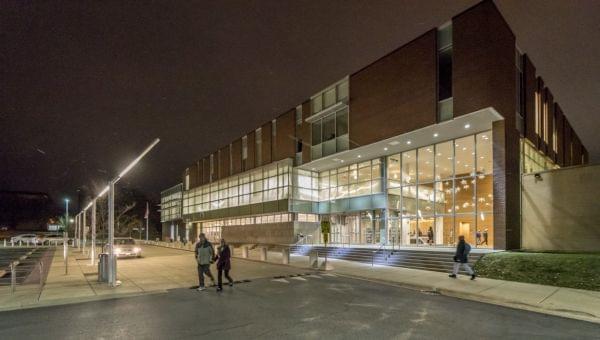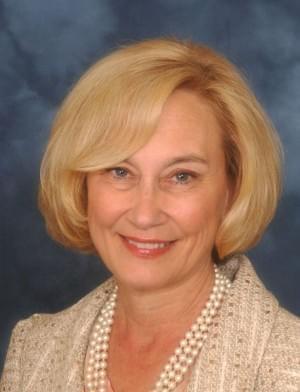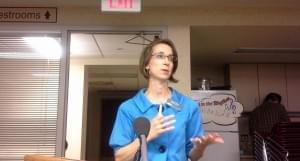Libraries Struggle To Reach Entire Champaign-Urbana Community

Patrons leave the Champaign Public Library just before the 6 p.m. closing on December 9, 2016. Darrell Hoemann / C-U Citizen Access
Since 2011, the Champaign Public Library has lost more than 8,000 cardholders, dropping 21 percent from 37,710 to 29,657, according to library data.
The Urbana Free Library has lost about 1,100 cardholders in the same time period. It had 13,880 cardholders in 2011 and now has 12,762 cardholders, a decrease of 8.1 percent.
Since 2015 alone, the Champaign Public Library has seen a significant reduction in cardholders, losing about 2,445 people. Donna Pittman, director of the Champaign Public Library since July, said she does not know exactly what caused the drop.
But she said one possible cause is the decrease in operation hours, which went into effect summer 2015 because of staffing cuts. The library closes at 6 p.m. on Thursdays and Fridays, and Pittman said she has seen families arrive around closing time on those days, only to drive away immediately because of the hours.

Champaign Public Library Director Donna Pittman has been serving as director since July 2016.
“As a librarian, that’s a killer because you know people want to be using you, and you have to shut the door. I don’t think it’s good for the community,” Pittman said. “I think it’s better for the community the more the library is open. The more people use the library, the better off we are because it means people are getting educated.”
Historically, library usage is highest during economic downturns, when people go to libraries for employment and educational training. The economic recovery from the recession in the late 2000s may be another driving factor in reduced rates, though Celeste Choate, executive director of the Urbana Free Library since April 2014, said she was unable to make that connection because she was not in Urbana during the downturn.
Choate said the low cardholder numbers mean the library has an opportunity to reach out to more people. She said the low numbers could also be caused by college students living in Urbana who in the past have mostly used the University of Illinois libraries instead of the Urbana Free Library.
“Some of those students really take advantage of the resources that the university has, and they find that their informational and educational needs are being met on campus,” she said. “And so some of the people who live here are never going to feel they need us. What we try to do is make a lot of options available to people and then get the word out to people so they know what we have for them.”
In 2013, the Urbana Free Library and the Community Strategic Planning Committee found validity in Choate’s argument. According to the strategic plan they created, 34 percent of Urbana’s total population were cardholders. When subtracting the university students, 61 percent of the population were cardholders.
Choate said another trouble area for the Urbana Free Library is transportation.

Celeste Choate has been executive director of the Urbana Free Library since 2014.
“We serve an entire community, but we only have one spot, and so we do our best to go out into the community knowing that people have [transportation] problems,” Choate said.
She said library employees go to schools and events and provide a home delivery service to those who cannot get to the library.
For the Champaign Public Library, Pittman said staff tries many techniques, such as advertising in the News-Gazette and Tweeting about events, to let different age groups know about what is going on at the library.
“People are bombarded with a lot of messages, so cutting through all that and getting people’s interest is a challenge,” she said. “So we have to approach it from a number of ways.”
Essie Harris, the Champaign Public Library’s Douglass Branch manager since 2003, said the community is not as aware of the branch’s existence, so the branch uses word of mouth to alert the community to its presence.
“A lot of people are surprised that we’re located over here, like they don’t know that we’re here,” Harris said. “We’re this new item that they found and that they’re excited to come to see us, and then we get more people coming in once they find out that we’re here.”
The libraries’ total number of cardholders is low compared with the total number of residents in the area. The reason is unclear.
However, Pittman said she likes to look at the number of households as opposed to total population when assessing the number of library cardholders.
“We know that in a lot of families, the family gets one card,” she said. “That way, the parent knows exactly what’s been checked out by the kids, so we have a lot of families where it’s maybe just mom has a card or maybe it’s just mom and dad have a card. So that’s a big piece of the population that doesn’t have cards, then.”
According to 2010 census data, Champaign has 32,207 occupied housing units, and Urbana has 16,961 occupied units.
As of this year, the Champaign Public Library cardholders made up 92.1 percent of occupied housing units and 36.6 percent of the city’s total population. The Urbana Free Library’s cardholders reflect 75.2 percent of housing units and 30.9 percent of the population.
These numbers do not take into account that some households might have more than one library card, while other households might not have any.
Links
- Champaign Library Hires Interim Director Pittman To Permanent Job
- Champaign Library Starting Over In Search For Director
- Public Library Foundations Beef Up Fundraising Efforts
- Urbana Free Library Debuts New Vinyl Collection
- UI Main Library Benefits From Business’ Closure
- Part-Time Staff At Urbana Library Say They Bear Brunt Of Budget Cuts
- Champaign Library Cuts Hours And Staff, Doesn’t Expect More Cuts In 2016

